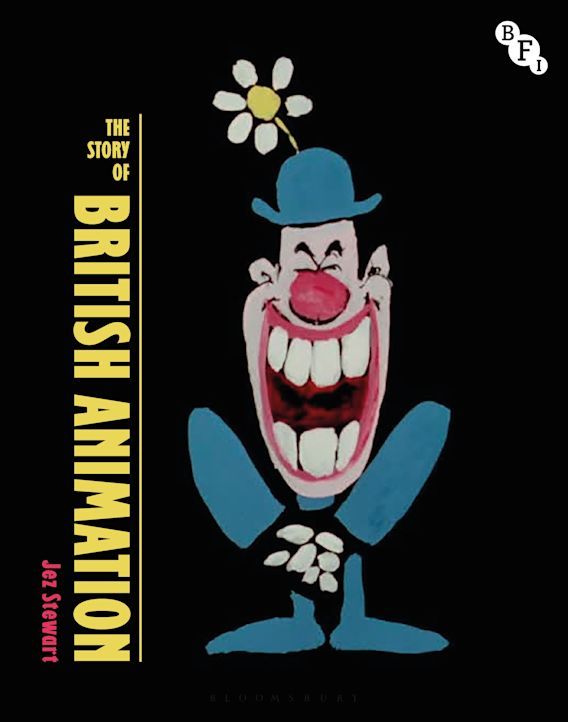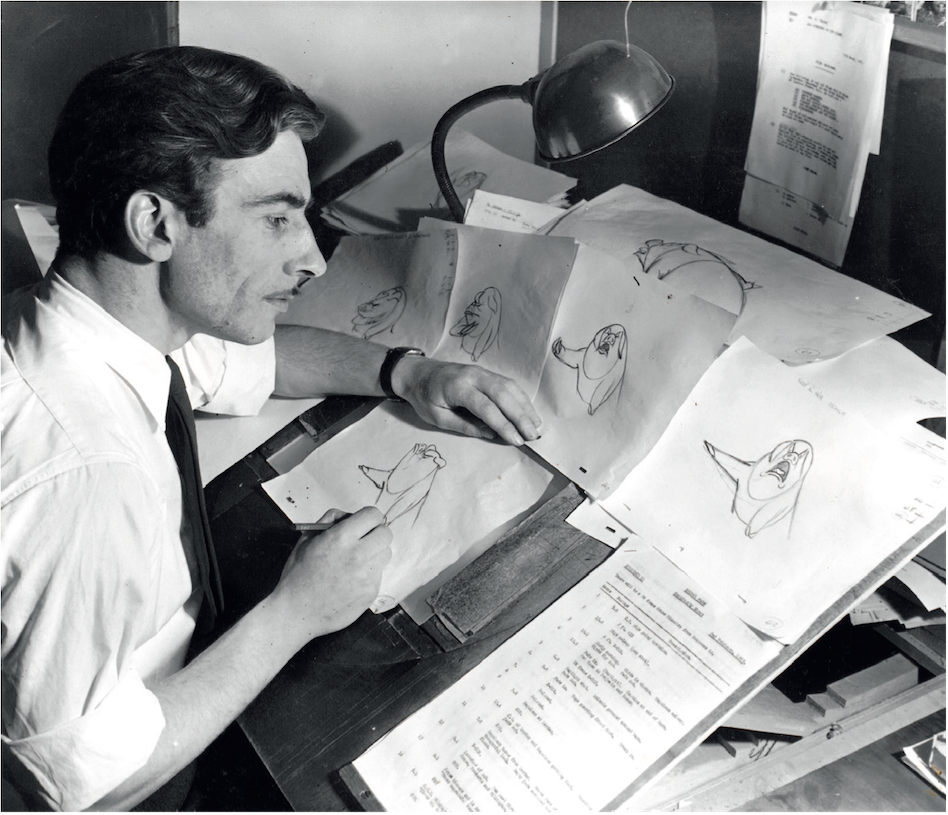Review of Jez Stewart, The Story of British Animation, London: British Film Institute, Bloomsbury, 2021.
Jez Stewart’s role as a curator at the BFI National Archive positions him well as author of this detailed history of British animation. The book takes a chronological approach, tracking production from the beginning of the 20th Century to the current landscape. It encompasses commercial and artistic work, showing the synergy between these two worlds as a central characteristic, and strength, of the industry. Case studies of filmmakers, studios, and forms of production are interspersed with the chronological narrative.
Chapter 1 begins with early animation experiments, as the form advanced from lightning sketches and stop-action, into a frame-by-frame discipline in its own right. Stewart shows that with the advent of the First World War, animation took on themes and forms that responded to the needs of national wartime messaging. Chapter 2 sees the post-war British industry struggling to compete with US imports. Finance from newsreel companies offered a lifeline, allowing the form to develop.
Chapter 3 illustrates how animators responded to the arrival of sound and color with varying levels of success. Stewart shows how, following upturns and downturns of the industry in response to the economic climate, animation came to rely on sponsorship as a relatively stable source of income. Chapter 4 tracks the growth of advertising and sponsored films, including groundbreaking work by Len Lye, Norman McLaren, Lotte Reiniger, and their contemporaries, alongside educational animation, political campaign material, and public information films.
Chapter 5 focuses on how the Second World War brought animators from Europe, challenging and enriching British animation. The Ministry of Information became a key commissioner and, with men away at the fronts, opportunities emerged for women in animation. In Chapter 6 is explained how the post-war era saw various attempts to build animation empires to challenge those in the US. Most were short-lived, but some had a lasting impact. Stewart notes that Gaumont-British Animation’s all-male training program, for example, continued to affect the industry’s gender balance for subsequent decades. In 1954 Britain’s first animated feature, Animal Farm, was released – funded in part by the CIA.
Chapter 7 shows that the launch of ITV created fresh advertising opportunities, with new production companies emerging. Animation festivals celebrated more alternative animators such as Bob Godfrey, while in 1968 Britain’s offbeat side was given a mainstream outlet in Yellow Submarine.
In Chapter 8, how the increasing popularity of color TV led to the emergence of new shows is addressed. Cosgrave Hall was established, and the BBC hosted early Claymation experiments by Lord and Sproxton. More small studios appeared, many fuelled by art school graduates, and there were slight improvements in the industry’s gender, ethnic and cultural diversity. Adult animation struggled to make itself heard above the clamor from children’s entertainment, though some work was getting through that ‘demonstrated that the form could carry serious, even weighty themes for an appreciative, grown-up television audience’ (Stewart 2021, 128).
Chapter 9 presents the 1980s boom in children’s entertainment, including lucrative international sales. Against this backdrop, the newly formed Channel 4 pledged to offer something different from TV’s existing cartoons. This was delivered in films such as The Snowman (1982), as well as shorts from auteur animators. Schemes including four-mations, animate!, and the Animator-in-Residence (AiR) program developed new talent and left a lasting legacy. And with the releases of A Grand Day Out (1989) and Creature Comforts (1990), the Aardman studio laid its claim as a major player in British Animation.
Chapter 10 moves backward to move forwards, looking at computer animation in the UK from the 1960s onwards. With the emergence of post houses such as Rushes Postproduction and MPC, CG’s commercial significance grew, and this continues today in the UK’s thriving VFX industry. Chapter 11, instead, focuses on animation in the 21st century. Aardman’s phenomenally successful Chicken Run (2000) set a commercial benchmark, though subsequent features brought mixed returns. The role that 3 Mills and Mackinnon and Saunders played in Tim Burton’s and Wes Anderson’s animated features reenforced Britain’s importance for stop-motion production, while the unprecedented success of Peppa Pig (2004-) reaffirmed its status in children’s television. There were also losses, such as the folding of Cosgrave Hall and HOT Animation, as political and economic factors put strain on the industry. Much needed government tax breaks breathed life back into production, but short-form work continues to struggle with unsustainable funding models. Stewart notes that the BFI’s Short Animation Fund, launched in 2019, improves this situation, but acknowledges that this is a sticking plaster; alternatives will be needed to establish a sustainable culture of artistic animation production.
Ultimately the picture that Stewart paints of the industry is of one that is adaptable, resilient, and creatively vibrant, but that remains a poor relative of its US counterpart in some respects. He suggests that for British animation to thrive it must once again look to the support of ‘commercials, sponsored films, educational shorts and music videos’, arguing that ‘enlightened sponsorship can be the lifeblood of creativity’ (Stewart 2021, 166).
Stewart’s Story of British Animation is well researched and dense with historical detail. Many of the names and faces covered will be familiar to those with an interest in animation history, but the book does an excellent job of connecting them, drawing sometimes disparate trajectories together into a coherent picture. The scale of this task can at times feel overwhelming. In trying to tell a near-comprehensive story of a national industry, the book occasionally feels like it is rattling through the decades without a breath. The expression of Stewart’s own evident passion for animation takes a back seat to the sheer quantity of factual information that he conveys. When the more personal voice does emerge, it brings welcome color to the history.
Carla MacKinnon is an animator and scholar, completing a Ph.D. at Arts University Bournemouth, with a focus on the animated documentary. She also produces and directs live-action and animated films and installations.


